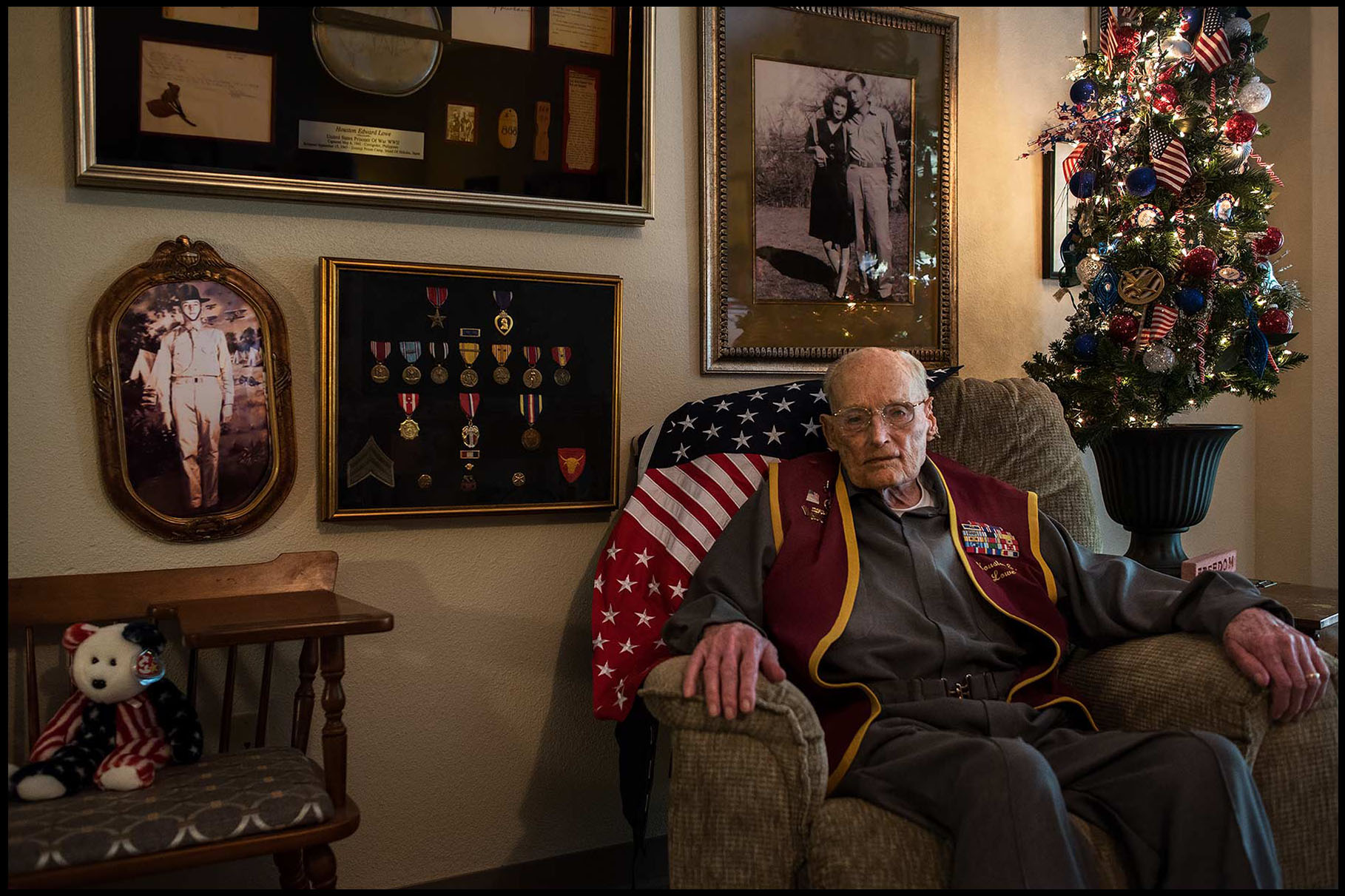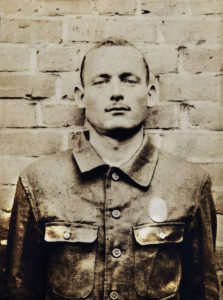
Houston E. Lowe
Prisoner of War
for 1,224 days
Houston E. Lowe
Master Sergeant, Army Air Corps
1941-1972

Sgt. Houston E. Lowe
Philippines as POW, 1942
Dear Jesus, they are here!
I was born in 1919 in Glen Rose, Texas. Daddy was a sharecropper, and from the time I was six I helped him on the farm. I left school in the sixth grade to work. From 1936-1940 I served in the Civilian Conservation Corps where I helped build the infrastructure at the Alamo Stadium and Yosemite National Park.
On February 11, 1941 I enlisted in the Army Air Corps. I wanted to serve with General MacArthur in the Philippines. In March, 1941 I was assigned to Battery E, 60th Coast Artillery, Ft. Mills on Corregidor Island the Philippines.
On December 7, 1941, the Japanese attacked Pearl Harbor. On December 29th they began bombing Corregidor Island. On May 6, 1942, the American troops surrendered and I became a prisoner-of-war. My number carved in bamboo was 868. Many of our Japanese guards were patients from psychiatric wards and inmates from the prison system. We were beaten every day and more and more guys were dropping dead. Day and night we were interrogated.
We were given very little water and food and forced to work in the fields. You had to work or you died. We were jam packed into tiny huts, sardine style. I was thankful I grew up on a farm and knew that many plant leaves and roots contained vital nutrients. Leaves could be placed on infected wounds to hasten healing. Every day was a routine of moving, working, bowing, and finding the will to survive. It killed every one of us to bow and salute the guards.
I was forced to labor on Japanese tarmacs in the hot, humid tropical sun. From Manila I was transported on a Japanese “Hell Ship”, the Noto Maru, to Japan. During the weeklong voyage it was 110-120 degrees in the filthy hold where prisoners were deprived of food and water. The Noto Maru was targeted by Allied submarines that did not know POWs were aboard. Two torpedoes fortunately did not detonate after striking the ship.
We arrived on Shikoku Island at a POW camp known as Hiroshima #4 I spent the remainder of the war at this location, viewed the Hiroshima atomic blast in the distant sky and I’m known as an “atomic soldier”, as I and other prisoners were bathed with nuclear fallout. Our camp guards deserted us, we were by our selves. On September 6, 1945, we heard the faint sounds of small biplanes circling, and trucks coming towards us. We scatter to the huts because we don’t know who could be coming for us. U.S recovery teams of American Red Cross were waving large American flags. They had been trained to approach us slowly. Their task was to rescue us. From a distance we hear, you are safe, we are Americans. “Dear Jesus, they are here!” I was held for 42 months.
We were taken by the USS Dickman to Letterman Army Hospital in San Francisco. They did not know how to treat us “walking skeletons”. Wet and dry beriberi, amoebic dysentery, severe malnutrition, scurvy, malaria, yellow fever, elephantiasis are some of what we survived with no medical assistance. I was over 6 feet and weighed less than 100 pounds when liberated. The doctors slowly nourished and rehabilitated us. After my hospital stay, I was on a several months’ furlough, during which time I had to decide either to remain in the military or separate into civilian life. I opted to remain on active duty. I met my wife in my home town during that furlough, stole her away from an existing fiancé and married her in 1946. We were married for 49 years. She succumbed to cancer after a valiant battle.
I retired medically in 1972 after almost 32 years of continuous service. The cancer predicted because of my atomic irradiation caught up with me in the form of a serious abdominal situation. I have also suffered a multitude of body-wide skin cancers since retirement. I served my country from a prison camp during WWII and I would do it all over again, if I had to. My daughter wrote a book of my experiences 868 The Sharecropper’s Son: The Story of A WWII American POW’s Life of Miracles. {10-27-17 • San Antonio, TX}
Brief History of Houston E. Lowe as told by his daughters, Toni Lee Lowe Serene, and Tina Leslie Lowe Farrell.